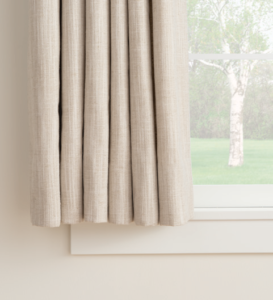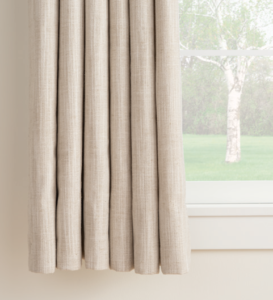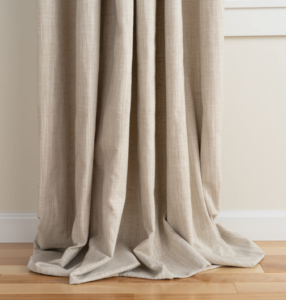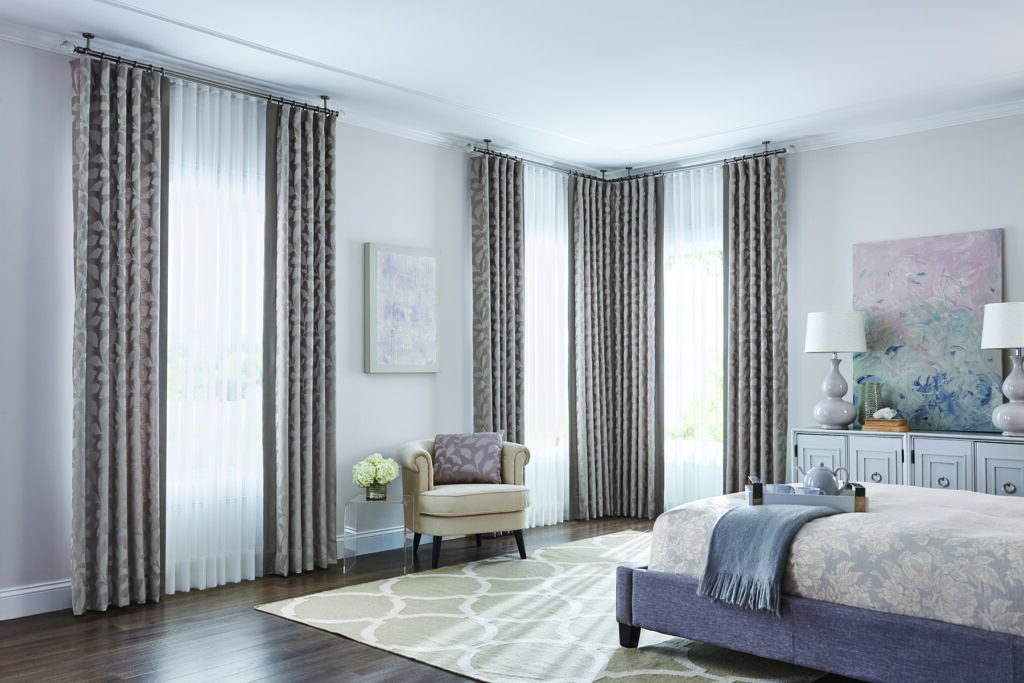Choosing the Right Drapery Length for a Professional Look
Choosing the Right Drapery Length for a Professional Look
When it comes to choosing drapery length in your home, there’s quite a lot of options available. Not all looks are equal, though. You want to balance function, style, and natural light. When you choose curtains, you don’t get to customize them like draperies (but we wrote about that in length in this blog about curtains vs draperies).
Custom tailoring for your draperies is necessary for a professional, finished look. Since curtain panels only come in set sizes, they’re often too short and narrow.
The wrong size can block light, look awkward, or even make windows look smaller.
The right size will make a room look amazing and pull the design together.
If you’ve made the decision to design your draperies yourself, there’s some key elements you need to know.
What drapery lengths are there?
|
|
|
|
|
|
|
|
Tip on layering: If you’re layering drapery panels, such as sheers underneath room darkening or blackout drapery, match the lengths. The only exception would be floor-length sheer panels underneath puddled, heavier materials. Any other combination is likely to look awkward and accidental.
Drapery Width Matters Too.
As you now know, length can change a lot about a look. Width plays a huge role as well. Most store-bought or premade curtain panels are far too narrow, and you would need to purchase multiple sets to achieve an attractive look.
With drapery, there are a few things to keep in mind with the width.
Your hardware and material should allow the draperies to open and completely expose the window – just barely. You don’t want the window frame visible on the sides, but you do want to prevent fabric from blocking any precious light. If you have very decorative window frames, pulling back to expose a little may still be visually acceptable to you. That’s fine! Either way, this means your hardware needs to be larger than your window. By how much? That’s not as easy to answer. You want the fabric to not need to be mushed to where you lose definition of pleating and it has to be forced back, so it still needs to be able to naturally sit off to the side.
With a stiffer or thicker material, this will require more room on either side of the window than a light sheer material. If you don’t want to buy fabric first to figure it out or consult with an expert, 6″ extra on both sides usually should give you enough space. If your fabric is on the stiffer side, you may want up to a foot extra space.
If you don’t have a nice view outside the window, however, you may choose to allow an extra thick stack of fabric on the sides to intentionally prevent the full window’s view from being visible.
Your fabric should be full when closed, not pulled tight to the point that pleats are strained or the fabric looks awkward. To thick and your drapery will block your window’s light and view. They may also bunch up awkwardly. Professional draperies are designed to maintain a beautiful fullness. Whether open and closed, pleats sit naturally and the fabric hang straight. You’ll want to aim on average for about two to three times the width of your window in fabric for a correct, professional look. This means if your window is 50″ wide, you should most likely aim for at least 100″ wide of fabric, but possibly more.
Most store-bought curtain panels cap out at about 48″ wide so you would likely need to purchase two sets of panels for each window. If you’re very design oriented, this could work to your benefit. You can combine solid colors on the outside panels with patterned, complementary panels on the inside.
The width of your pleats should also accent the width of your window. There are a wide variety of pleats, and each has its own fullness and works best with different widths. Stevenson Vestal has a nice guide for pleats and window widths.
If your drapery panels are merely decorative, this of course changes things. You don’t need to consider functionality – just appearance. And because they will never be closed, the only part you care about is what they look like “open” (or what we call stacked).
Measuring the right length and width for draperies isn’t a cakewalk.
We know this may still seem a little daunting, but we’re here to help. If you are in the Greater LA area and you’d like help with custom drapery, give us a call or fill out a form here on our website. Our design consultants are well-versed in drapery measurements and can help you choose the perfect look without you having to do the math. You also won’t have to learn pleats, which trust me, is a lot of work!





